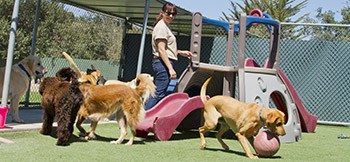
Horses are big animals that require exercise and running around. Before you get a horse, it’s important to research its needs to provide it with the best possible life. So, how many acres of land do you need for horses?
On average, you need at least 1.5-2 acres of land for one horse. For every other horse you get after that, you need only one more acre. So, if you were to keep 4 horses, you would need 5 acres.
Keep reading below for more information.
Before you scroll further down this guide, check out these other horse-related articles: Best Horse Rescues in Ohio and Best Horse Rescues in British Columbia.
Table of Contents
How Many Acres of Land Do Horses Need?
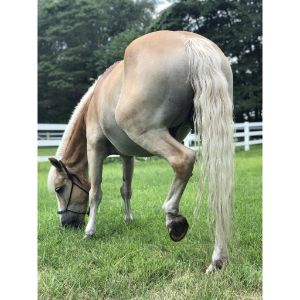
Although horses have a reputation for being high-maintenance, provided they have access to plenty of lush grass, they actually require very little care.
1.5-2 acres of land are the minimum needed to care for a horse properly, although more space is always preferable.
In contrast, if the grass is poor, equestrians will need larger areas than the recommended two to three acres. Keep in mind that horses are grazing animals that require a steady diet of fodder.
If you don’t have enough space to grow enough grass for your horse, you’ll need to purchase hay. Furthermore, horses need ample room to exercise and play.
Understanding the horse’s space, food, and activity requirements is essential when deciding how much acreage to offer a horse. Horses require very little upkeep if given enough freedom to roam freely.
You’ll need at least two acres of land for your first horse. You need one more acre than the total number of horses you have. So, if you want to have four horses, you’ll need at least five acres of land.
However, there are exceptions to this rule, including the quantity and quality of grass and whether or not you intend to leave all of your horses outside at once.
For instance, within a six-acre area, say there are numerous pine trees and some low spots that make it unsuitable for grazing. More than three horses would be too much for this property.
So Why Do Horses Need So Much Land?

Because of their size, horses need much room to move about and graze. Wild horses often congregate in huge groups and explore vast territories.
This not only makes it easier for them to obtain food and water but also makes it easier for them to avoid being eaten by predators.
Even though they don’t go quite as far as their wild counterparts, domesticated horses require a significant amount of land.
If you want your horse to be happy and healthy, you must provide him with at least one acre of land. However, the more land you provide them, the better.
Horses have specific space requirements so they can exercise and move around freely.
Stables or paddocks are typical housing options for horses, regardless of whether they are to be kept as companions or working animals.
Unless routinely put out or exercised, this can lead to several health problems, including joint stiffness, muscle wastage, and respiratory disorders. These problems can be avoided by having them exercise regularly or by turning them out.
In addition to being highly social creatures, horses thrive when they are in the company of other equines. They risk developing loneliness and depression if they do not have companions.
Because of all these factors, it is critical to ensure that horses can access a large amount of pasture.
So, in conclusion, horses are enormous animals that require ample space for grazing, moving about freely, and resting in comfort.
Your Horse Will Need Room to Exercise

If you are thinking about keeping a horse on your property, you will need to make sure that you have enough space to give them the necessary amount of space to run around and play that they require.
The space requirements for a horse range from a quarter acre to an acre, based on the horse’s size.
You can still keep a horse even if you have no access to a lot of space, but you’ll have to find other ways to get it exercise, including taking it for walks around the neighborhood or using a lunge line or a jogging wheel.
Stabled horses are ridden five days a week and given daily walks on a walking wheel. Lunging your horses on non-riding days is a good alternative to using a walking wheel if you don’t have one.
The ideal environments for horses are wide, open areas where they can run freely. They won’t be able to take up the necessary physical activity if there are too many barriers in their path.
If you’re thinking about bringing a horse into your home, you should first make sure you have enough room to provide it with the exercise it needs.
Determining How Many Acres of Land Do You Need For Horses
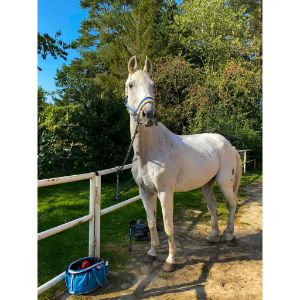
It’s important to consider the horses’ environment before you decide to rear them. The top three are listed below.
Quantity of Land
Where do you plan on keeping your horses, a barn or the pasture? Expect the pastures to become overgrazed very quickly if they will be living outside, and take into consideration the possibility of purchasing additional land.
More maintenance and management will be needed for smaller plots of land. You’ll have to move the herd around, keep the animals inside when the weather turns bad, and reseed the pastures regularly.
The optimal times to sow seeds are late winter or early spring.
However, if the area is too small, it may take a while for the grass to grow and get established, which is especially problematic if the horses are allowed out into the fields regularly.
That’s why purchasing additional land is a great option. That way, you may always have a portion of the field available for the horses to forage in, even if you only end up seeding a portion of the area.
Quality of Land
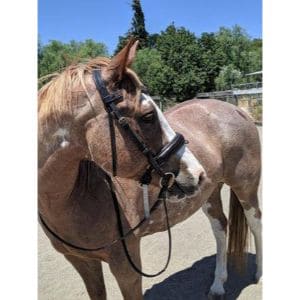
The quantity and quality of the food that can be grown on the land is another crucial factor to consider when caring for horses.
The land quality may not be suitable to support the plants required for feeding your horses if you reside in a dry area that receives regular drought. In that situation, you ought to look for a larger acreage to give the animals more space to roam while foraging.
As we’ve already discussed, taking a larger area into account reduces the likelihood of overgrazing, which helps preserve the land’s quality.
How Many Horses There Are
Is one horse all you’re interested in keeping, or do you want a whole herd? Determine how much land you’ll need based on your response to this question.
As was previously mentioned, you should provide at least 2 acres of land for your first horse and another acre for each horse after that.
Theoretically, you’ll need between five and eight acres of land to properly care for four horses. However, horse owners usually acquire additional horses, so it’s a good idea to purchase more land if possible.
It will not only improve the animals’ living conditions, but it will also guarantee that you have adequate room for future herd expansions.
The Challenges of Horsekeeping on Limited Land
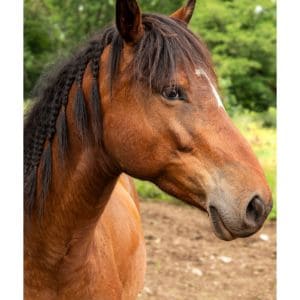
Although it is recommended that horses be kept on a larger plot of land, horses can still do well on smaller plots of land, albeit with some added difficulties.
Overgrazing
When raising horses on a limited plot of land, overgrazing is a common issue that occurs when there are too many animals for the available space.
Ten horses on two acres of land will eat the grass down to the ground, causing the property to become unusable.
The ultimate result will be unattractive pastures and significant soil erosion.
The soil quality will decrease when rainwater runs over the hard, compacted soils, washing away manure, sediments, and nutrients and making it harder for nutrient-rich grasses to flourish.
Mud
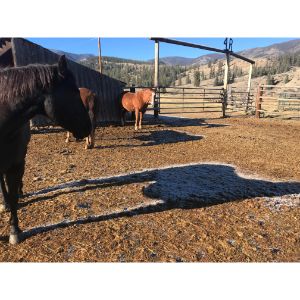
Mud paddles are often attributed to bad weather, but the real cause has less to do with the rain that falls and more with the path the water takes once it hits the ground. Rainwater may pool in undesirable places in a tiny space since an efficient drainage system is challenging to install there.
In addition, muddy mires build rapidly in high-traffic areas such as near feeders, water troughs, gates, and similar fixtures.
Horse ranches often have problems with mud. It’s slick, so horses are more likely to hurt themselves, by tripping over it. It causes bacterial infections that can harm their hoofs.
Stacks of Manure
Horses, on average, create 40–45 pounds of manure daily. There won’t usually be enough room for the ever-growing pile of manure if you’re keeping your horse on a little piece of land.
In addition to being an eyesore, a large manure pile that hasn’t been composted can be a haven for strongyles, roundworms, and other parasites.
In addition, manure serves as a magnet for flies and other pests as temperatures rise, and it can cause contamination to seep into the ground and surface water nearby when it rains.
A larger plot of land means more room for your compost pile, which is crucial to its success.
Storage for Hay
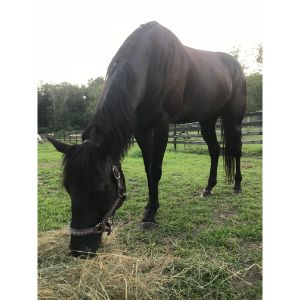
Like many horse owners, you probably want to stock up on hay for the entire year or season at once. Buying in bulk saves money while still providing your horse with a balanced diet.
Horses are susceptible to colic and other digestive tract diseases when their diet is abruptly or significantly altered. Laminitis is another possible result.
Smaller farms may not have the space to store large quantities of hay, so you may wind up paying more money on hay and on veterinary care for your horses. Buying more land is the best way to avoid all of these problems.
Horse Farm Management

Proper land management is essential to the well-being of your horses. Keeping your land well-managed will ensure that it remains lush and productive.
Overgrazing and weeding excessively might be harmful to the horses.
Land degradation and water pollution are other factors decreasing available grazing land.
To prevent these issues, labor-intensive land maintenance and careful planning are essential every day.
Some suggestions for maintaining productive grazing land are provided below.
- Rotating pastures
- Stalling horses
- Keeping some land from being used
If you plan, you’ll have an easier time caring for the land your horse needs. If you don’t have adequate room, don’t force your horses to graze in close quarters.
You should ensure your horses get the daily feed equivalent to around 10% of their body weight.
Frequently Asked Questions
How much does it cost to own a horse per year?
Owning a horse is not an easy thing. It can cost anywhere between $6,000 to $10,000 a year, depending on where you live and whether you’ll board the horse or keep it on your property.
How long does a horse live?
Horses can live anywhere between 25-30 years. In some cases, some hardier breeds of horses live even longer, upwards of 40-50 years.
What is the best animal to keep a horse company?
While this answer will, of course, depend on the horse, they typically do well with dogs, goats, or donkeys.
How Many Acres Of Land Do You Need For Horses?
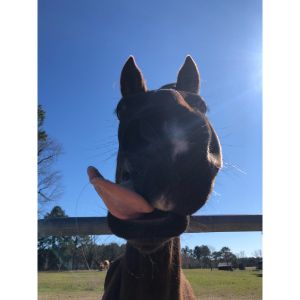
Getting a horse is a big commitment. It’s important to ensure you have all the resources to keep it happy and comfortable before bringing it to your place.
One of the ways you can do that is by providing it plenty of land, replicating its natural habitat.
If you find this guide, “How Many Acres Of Land Do You Need For Horses,” informative and helpful, you can check out these other horses-related articles from our team:
You can learn more about horses by watching “10 FACTS About HORSES That You Didn’t Already Know 🐴” down below:



